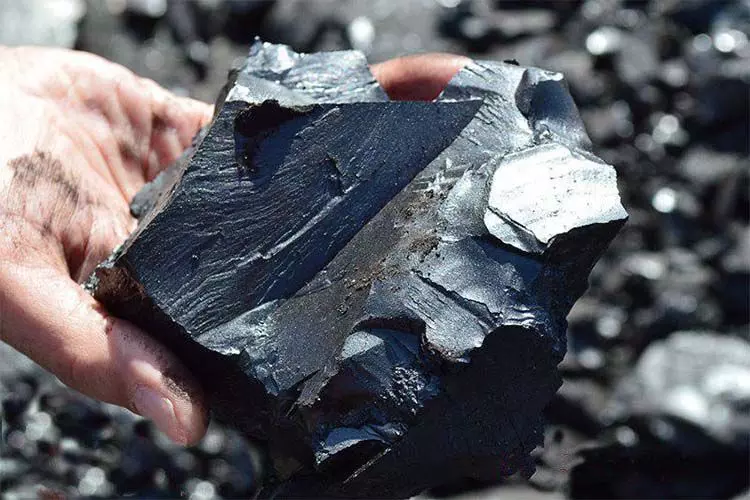 Natural Bitumen
Natural Bitumen
WHAT IS NATURAL BITUMEN ?
Natural bitumen, also known as Gilsonite, holds distinct and well-defined applications across various industries. Each industry incorporates natural bitumen either as a primary raw material or as a finished product based on its specific requirements. Gilsonite, essentially representing naturally extracted bitumen from mines, finds versatile applications. The utilization of bitumen or solid glycine spans a wide range, and a brief overview of its diverse uses will be presented in the following sections of this article.
WHAT IS THE APPLICATION OF NATURAL BITUMEN?
The applications of natural bitumen, also known as Gilsonite, span across diverse industries. It finds usage in road construction, oil and gas, waterproofing, insulation, coking, and as a fuel. One of the simplest and direct applications is its use as a fuel, where bitumen serves as a furnace fuel with minimal processing required. Gilsonite exhibits similarities to coal, and its natural extraction from mines has earned it the designation of natural or mineral bitumen.
WHERE IS NATURAL BITUMEN FOUND?
Natural bitumen, categorized into “natural or mineral bitumen” and “oil or refinery” types, shares similar shapes and properties, with minor structural differences. Mineral or natural bitumen is extracted directly through mineral extraction or from Gilsonite lakes, while petroleum or refinery bitumen is obtained during the crude oil processing.
Several countries boast bitumen mines, including Canada, Iraq, Australia, Russia, and Venezuela. Key Gilsonite resources are scattered across Alabama, Alaska, California, Kentucky, New Mexico, Oklahoma, Texas, Utah, and Wyoming. Utah, in particular, holds an estimated 18,680 MMBO in ten major accumulations.
In the United States, Gilsonite accumulations are commonly referred to as “tar sands,” a term that has been in use for decades to describe petroleum-bearing rocks on the Earth’s surface. Other terms for such accumulations include oil sand, oil-impregnated sand, asphaltic sand, rock asphalt, bituminous rock, and bitumen-bearing rock. Gilsonite is defined as petroleum with a gas-free viscosity exceeding 10,000 centipoises at the original reservoir temperature.
TYPES OF NATURAL BITUMEN
Natural bitumen, when extracted from various locations, yields distinct samples categorized in detail. The extraction site plays a crucial role in determining the material’s composition, leading to significant differences that impact its applications. Inaccurate extraction methods can result in issues such as elevated sulfur content, increased aging, a higher percentage of minerals and associated impurities, and a lack of precise identification of the bitumen type and its properties. Identifying suitable Gilsonite involves various methods tailored to different industries and purposes. Generally, quality mineral bitumen exhibits excellent compatibility with petroleum bitumen, producing a suitable product that meets standard road bitumen specifications after blending. Bitumen finds extensive use across industries, serving purposes like coating products in the paint and resin sectors or acting as an additive in casting applications. For those interested in learning about asphalt, its features, and the three most widely used types of asphalt globally, stay tuned for upcoming articles.
IS BITUMEN A NATURAL PRODUCTS?
Bitumen, a dense and highly viscous hydrocarbon, is indeed a natural product. It is found in deposits such as oil sands and pitch lakes or obtained as a residue from the distillation of crude oil (known as refined bitumen). In certain regions, particularly in the United States, bitumen is commonly referred to as asphalt. However, the term asphalt is more widely recognized as the material used for road paving, consisting of a blend of gravel, sand, and other fillers bound together with a bituminous binder.
The term natural bitumen is also often interchangeably used with tar or pitch, although technically, tar is a byproduct of coal carbonization, and pitch is derived from the distillation of coal tar. In geological terms, natural bitumen remains the preferred designation for naturally occurring deposits of solid or semi-solid petroleum. “Bituminous rock” refers to sandstone infused with bitumen, and similar materials can be found in the oil sands of Alberta, Canada.
THE DISTINCTIONS BETWEEN NATURAL ASPHALT AND NATURAL BITUMEN
Natural bitumen serves as the liquid binding agent that holds natural asphalt together. It is common for the term “bitumen” to be erroneously used to describe natural asphalt.
In constructing a bitumen-sealed road, a layer of bitumen is initially sprayed and then covered with a mixture, and this process is repeated to create a two-coat seal. Natural asphalt, on the other hand, is produced in a plant where aggregate, gilsonite, and sand are heated, dried, and mixed into a composite blend. This mixture is then applied on-site through a paving machine as a solid material at a predetermined or required thickness based on its intended use. Compared to a bitumen-sealed road, asphalt results in a smoother and more durable surface.
When dealing with natural asphalt or Gilsonite, it is crucial to understand the various types available. There are three main types of natural bitumen: Hot Asphalt, MC Cold Mix, and UPM, each with different variations suitable for summer and winter applications. The following provides a brief overview of each asphalt type.
For more information, please Contact our Sales Team.

